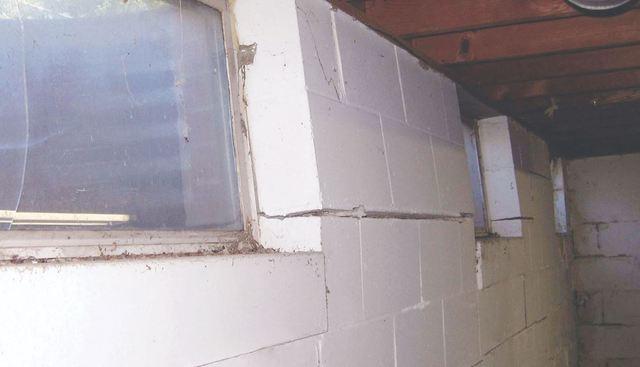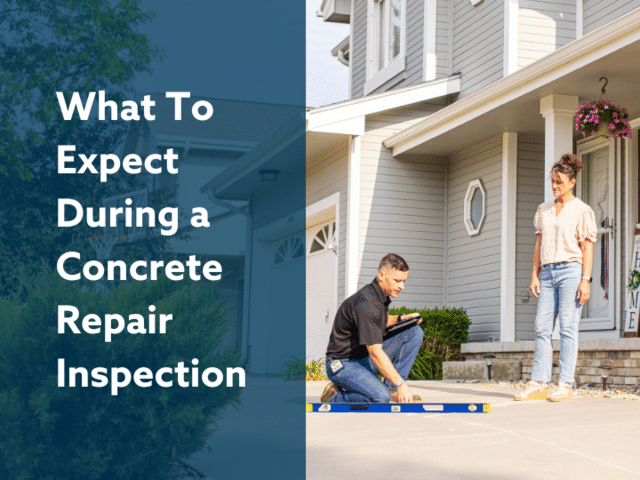How We Repair Bowing and Buckling Foundation Walls With the PowerBrace(TM) System

When foundation walls begin to buckle, bow or tilt inward, homeowners are correct to be alarmed. Outside pressure from soil and water can even cause foundation walls to collapse.
The PowerBrace(TM) System is a unique, patented foundation wall repair system that's designed to stabilize failing basement walls and provide the potential to straighten walls over time. In this article, we discuss the PowerBrace system - how and why it works and how our crews install it.
About the PowerBrace System
The PowerBrace steel I-beams will stabilize the wall in its current position without any further adjustment. Over time, the PowerBrace System can be tightened to make bowing or tilting walls straighter and more vertical. Product Features
- No outside excavation required
- Can be tightened to allow for improvement of the wall over time
- All components are zinc-coated for rust resistance
- Neat, clean appearance in the basement
- Minimal disruption of basement space

Wall Reinforcement Can be Paired with Other Foundation Solutions
Sub-par I-beam systems will rust and deteriorate over time. The PowerBrace system includes a zinc-coating that protects it from this kind of corrosion.
When possible, we recommend repairing bowing or buckling foundation walls with Geo-Lock(TM) Wall Anchors. However, this wall anchor system requires access to the earth outside of the foundation. Sometimes, property line issues eliminate this as an option. When outside access is impossible, the advantages of the PowerBrace System are often a great solution. Our experts will be able to examine your foundation and determine if this repair strategy is the best fit for your structural issues.
Installing the PowerBrace Wall System
The PowerBrace System can be installed with no disruption to outside soils or landscaping. This foundation wall system installs quickly in your home, immediately and permanently halting the inward movement of your foundation walls. Our crews take the following steps to install the PowerBrace System.
1) Cut Wall Braces
The PowerBrace is a wall repair system based on strong steel I-beams. The I-beams and their support hardware have a special rust-resistant zinc coating to ensure that your system will look and perform like new for decades to come.
Our foundation experts will determine how many PowerBrace supports are required for your wall repair. Before a PowerBrace wall support is installed in your home, it must be cut to size. Based on the wall height of your basement, we will cut each beam to the appropriate height.
2) Secure the Floor Joist Hardware
Next, the top of each brace is attached to a floor joist near the mudsill at the top of the wall. The specially designed bracket is bolted to the floor joist and contains a large-diameter bolt for adjusting and tightening after the installation.
A PowerBrace installation will not damage your floor framing. To ensure proper performance of this wall repair system, one of our certified foundation experts will inspect the strength of your floor joists prior to recommending this repair strategy.
3) Fine-Tune the PowerBrace Positions
The PowerBrace Foundation Wall System works best when each I-beam is perfectly plumb or vertical. Our crews will use a level to fine-tune the position of each beam in preparation for the next step.
4) Attach the Braces to the Floor
To complete the installation of your PowerBrace(TM) System, each beam is attached to your concrete floor with a special, bolt-in-place bracket.
Unlike other foundation wall repair methods that install from the inside of the foundation walls, the PowerBrace(TM) System spans the entire height of the foundation walls. This makes the PowerBrace(TM) system suitable for repairing walls that bow and buckle from the middle. Additionally, the PowerBrace(TM) can repair walls that are sliding inwards from the bottom or tilting inwards from the top.
5) Straighten Walls
The PowerBrace(TM) System includes a unique, patented adjustment mechanism that is unlike any other I-beam foundation wall repair system.
The bracket that anchors each I-beam to a floor joist includes a long bolt that can be tightened over time to advance the I-beam. This can force a bowed or buckled foundation wall back toward its original vertical and straight position. Straightening potential depends on several factors, including soil conditions outside the foundation.

Your Foundation Wall Repair Company
At Thrasher we want to help you restore your bowing, buckling, tilting, or shifting foundation walls back to their original, structurally stable condition. At We take pride in the lasting quality of each of our installations, and stand behind each PowerBrace installation with our 25-year warranty. To help you decide if we're the company for you, we offer free foundation wall repair inspections throughout our Nebraska, Kansas, Iowa, and Missouri service area. Each of our free inspections includes a no-obligation written price quote, an on-site consultation, and a copy of our 96-page full-color book "Foundation Repair Science".
Article Categories:



